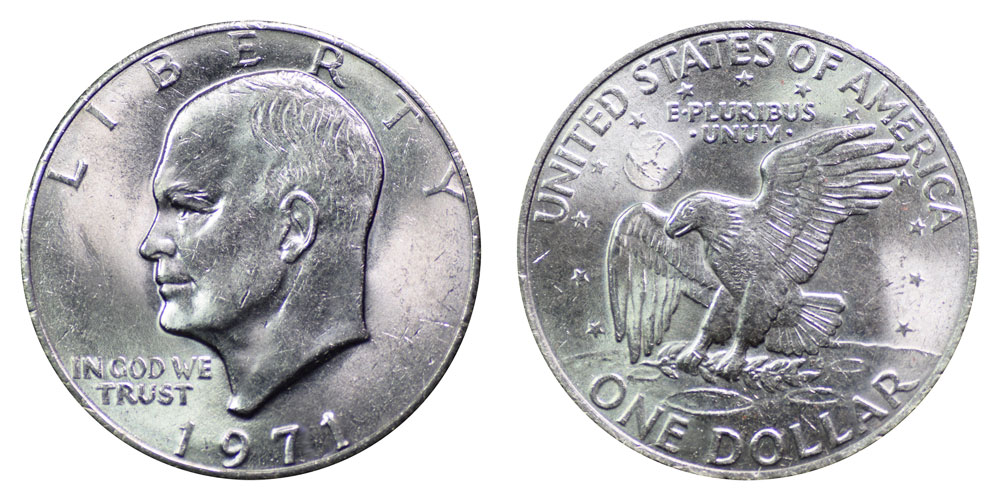With the passing of Michael Collins, an astronaut from the famed Apollo 11 moon voyage, it might be time to discuss how the history of the U.S. space program intersects with U.S. coins. Do you know the history of the Eisenhower dollar coin? It was created to honor a successful general and past president at a very interesting time in our country’s history – when the space program was at its zenith.
The Eisenhower Dollar
Younger Americans today may be less familiar with the name Dwight D. Eisenhower, or “Ike” as he was known, but he wasn’t just a two-term president. He was also the Supreme Commander of the Allied Expeditionary Force in Europe during World War II, and a five-star rank General. Eisenhower ran for president in 1952 and presided over the post-war expansion of the economy. He ended the second term of his presidency in January of 1961 and was succeeded by John F. Kennedy.
At that time there was no current U.S. dollar coin, and there had not been one since the Peace dollar was retired in 1935. When Ike died in March 1969, Congressman Robert Casey introduced legislation mandating a new one-dollar coin that would honor Eisenhower. The crew of Apollo 11 successfully landed on the moon in July of 1969, so Casey proposed more legislation in the fall to make the reverse of this coin a tribute to the moon landing.
The Ike dollar was designed by Mint Chief Engraver Frank Gasparro and featured Eisenhower on the obverse in profile with the word LIBERTY in an arch over his head and the motto IN GOD WE TRUST and the mint date below. On the reverse is an image of an eagle in flight on the moon with the words UNITED STATES OF AMERICA and E PLURIBUS UNUM above and ONE DOLLAR below. This was based on the mission patch conceived by astronaut Michael Collins and others.
A 1971 Coin Debut
The Mint released this dollar coin to the public in 1971. The circulating coin was made of copper and nickel and contained no silver, but a collector’s item coin was also minted and was 40% silver. The collector’s item coins did well, but the circulating coins were not popular except in casinos. The public apparently did not like the feel of the larger coin in hand. Still the Mint continued to produce them every year until 1978 – with the exception of 1975 – when they were discontinued. A bicentennial Ike dollar was produced beginning in 1975 with the dates 1776-1976 displayed on the obverse.
Eisenhower dollars are beginning to be more popular with collectors today. The value of the coin in average condition is around $2 with mint condition coins going for as much as $85 at auction. There are a number of varieties and coin errors out there, but not all of them are listed in coin catalogs. One of the most valuable Ike dollars is the 1972 Type 2 which can be identified by how the moon appears on the reverse.
Not too many U.S. coins contain references to more recent American history, and the moon landing is something many older Americans remember with wonder and joy. If you would like to collect a coin that was inspired by the actions of a World War II 5-star general and an Apollo 11 astronaut, take the opportunity to seek one or more out now. We at Grand Rapids Coins would be happy to help you with your search.

